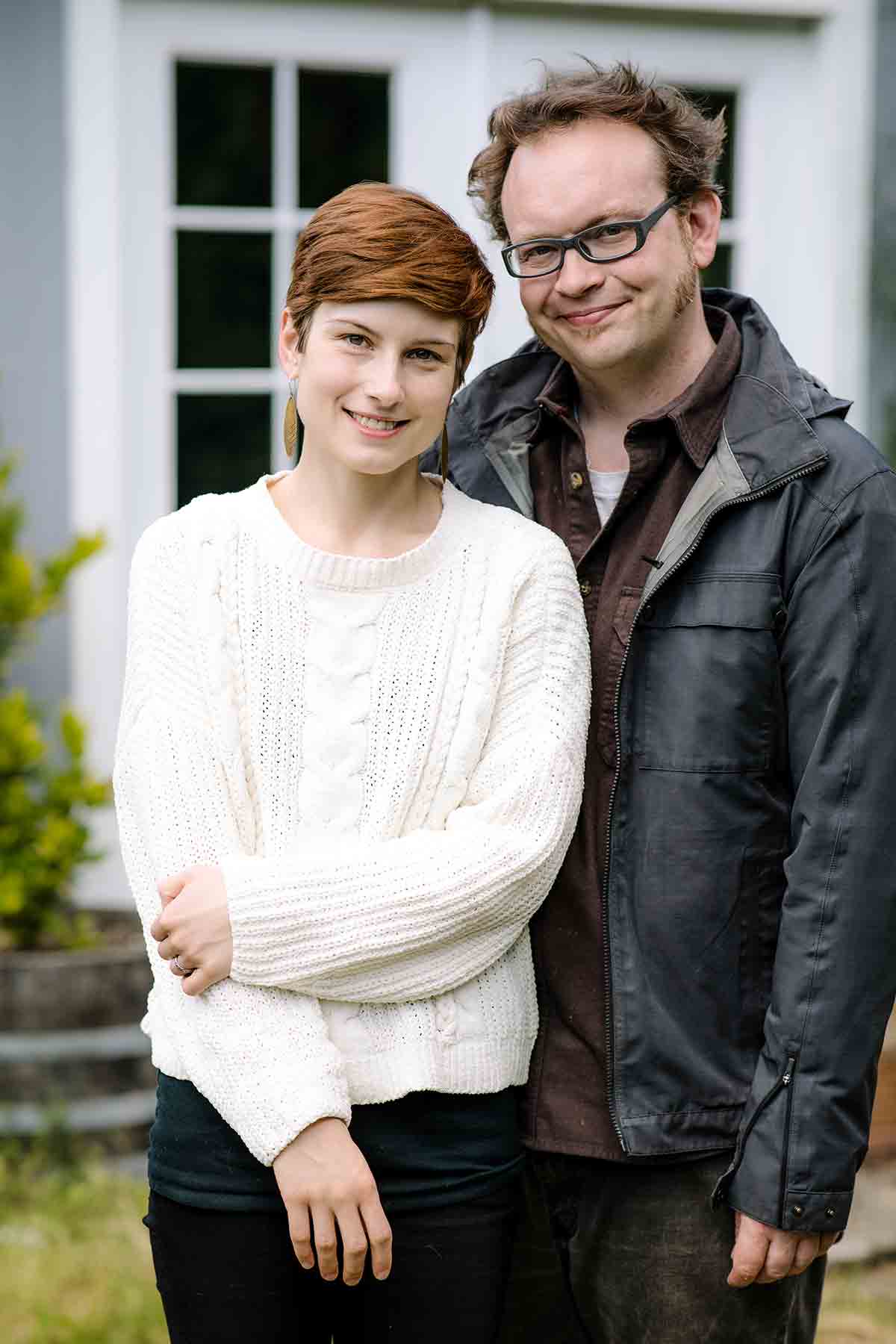
SUBSCRIBE ON Apple | Spotify | Sticher | Amazon | Google | iHeart | TuneIn
Contents
☞ If you like what you hear and want to help support us, even $1 will help! Thank you.
Have a question, query, or quagmire you’d like Renee and David to answer? Click that red button to the right, or click on this link to leave us a recorded message. Press and talk away and maybe you’ll be featured on the show!
There’s a reason some things are revered as classics. And there’s also a reason that even classics are occasionally updated. Take the venerable Joy of Cooking. It’s seen generations of American home cooks through weeknight dinners as well as birthday cakes and elaborate entertaining throughout the decades. And, thanks to occasional revisions to the classic, it’s managed to do so in a manner that keeps it relevant even in contemporary times. This week, David and Renee talk with the couple tasked with the enormous responsibility of determining which recipes remained in the most recent version of the classic cookbook and which were added to address the wants and needs of you, dear reader.
[renee-signature]
Chat with us

Have a cooking question, query, or quagmire you’d like Renee and David to answer? Click that big-mouth button to the right to leave us a recorded message. Just enter your name and email address, press record, and talk away. We’ll definitely get back to you. And who knows? Maybe you’ll be featured on the show!
Transcript
Renee Schettler: David, how many copies of Joy of Cooking by Irma Rombauer do you have?
David Leite: Oh, a couple. I have the facsimile of the original. I think that came out, I don’t know how many years ago. I have the 1997, that big redo, which really is not my favorite. I have the new one and I might have one of the ones from the 1970s, but I’m not sure. When I was cooking for one of the professors at CMU, when I dropped out…
Renee: That’s a whole other story right there, I suspect.
David: Entirely. You can read it in my book. The two books he had me cook for from all the time, Joy of Cooking and The New York Times Cookbook, that’s all they wanted was recipes from those two books.
Renee: Interesting.
David: What about you?
Renee: I have to confess, I don’t actually own a copy of Joy of Cooking.
David: Shame, shame.
Renee: Listen, listen. Every place I’ve always worked has had a copy, a different version under lock and key. I’ve always just consulted it there. I’ve always kind of held off on purchasing one because they do come out with these consequent versions. There’s always something new and different to find in it.
David: That’s like saying I’m not going to buy an iPhone because there’s always going to be a new at some other point. You’ve got to put your foot in the water.
Renee: Same but different David. Same but different.
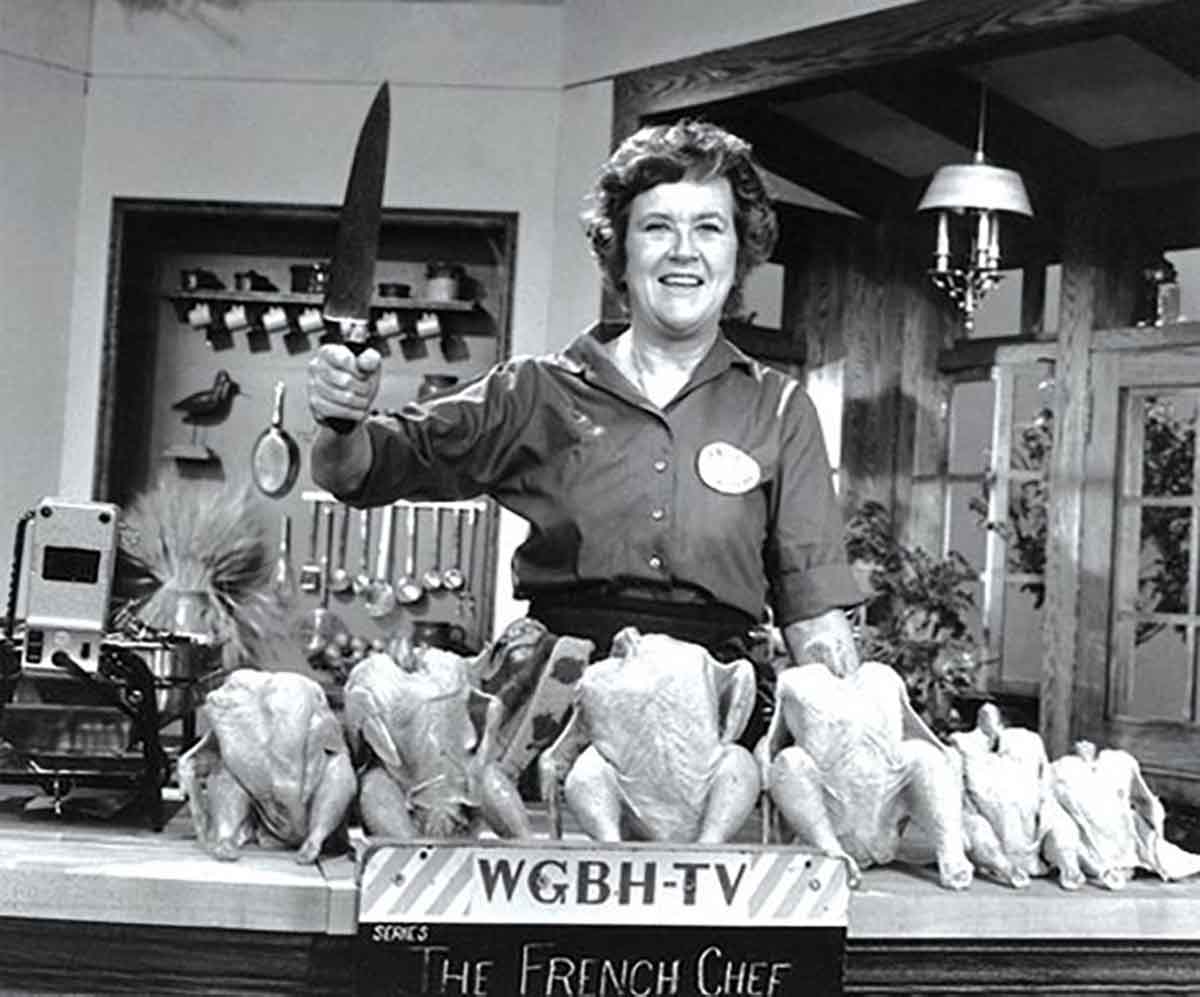
David: Yeah, right. Did you know that Julia Child said that she learned to cook in part by using The Joy of Cooking?
Renee: That Julia, wise woman.
David: She is. What’s interesting is just about every culture has what pundits describe as The Joy of Cooking of blank. In Portugal, it’s The Traditional Portuguese Cooking by Maria De Lourdes Modesto. Then there’s The Talisman Italian Cookbook in Italy by Ada Boni. It goes on, it goes on to every culture has that particular version of what they consider to be The Joy of Cooking.
Renee: Absolutely. Here in America, it is the most enduring cookbook.
David: While I could just prattle on and extol the virtues of it, why don’t we talk to John Becker, the great-grandson of Irma Rombauer, and his coauthor and wife, Megan Scott. Two folks who know all there is to know about joy. Think about, they are the givers of joy there. They spread joy wherever they go. They’re the joyful couple of the culinary world. They just give joy everywhere–
Renee: Adam, would you make him stop please?
Adam Clairmont: Yeah, I think we’ll just edit that one out. He’ll never know. He never listens to these things anyway.
Renee: Thank you.
Adam: You got it.
Renee: I’m Renee Schettler, editor in chief of the website Leite’s Culinaria.
David: I’m David Leite, its founder. This is Talking With My Mouth Full. John and Megan, welcome to the show.
Renee: Thanks for being here.
Megan Scott: Thank you so much for having us.
The relevance of Joy of Cooking
David: Before we start, I really want to say this: that I think some of our listeners might think why talk about a book that is 89 years old, but that’s the point of The Joy of Cooking, at least to me. The book and its recipes, they’ve gotten us through World War II, the Cold War, the tumult of the 60s and 70s, the changing landscape of family, financial crises, and now with the pandemic, I think people are grabbing for it. We are. It’s on our counter in the kitchen.
David: It’s always been there for us, this particular book and all of its heritage and lineage and no other book in America can say that.
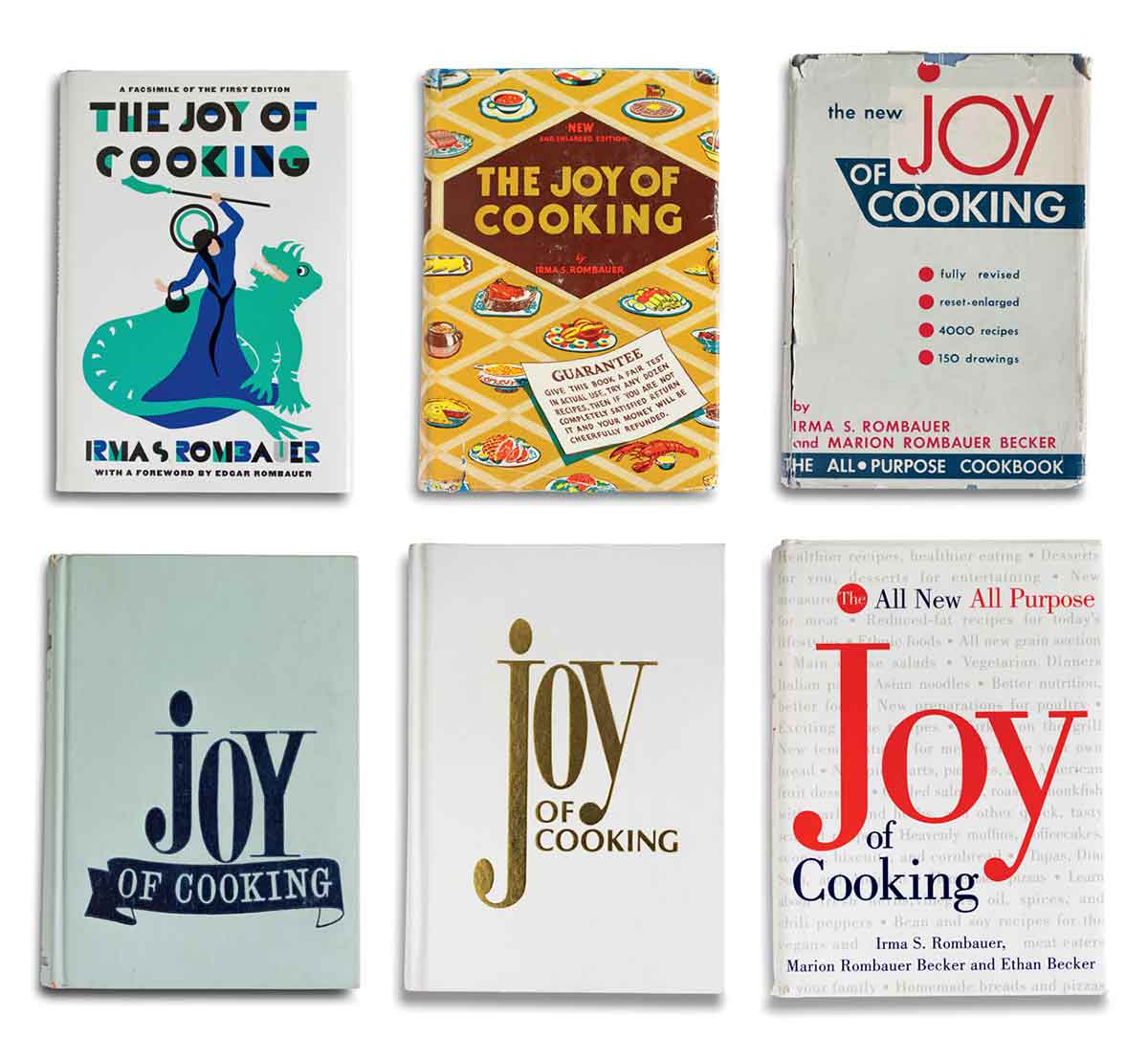
John Becker: Absolutely. I mean, I think that we’ve certainly tried to keep Joy relevant, especially for the times we find ourselves in now, but there’s a continuity, obviously, between the first edition and our latest. At least I’d like to think that there is, but it’s a living document. There are nine additions, 10, if you account for the two that were published in the 40s, both during and after World War II. Yeah, no, I think it’s definitely still relevant. At least I hope so. We certainly tried to make it relevant.
Megan: I mean, one of the things that we had thought about a lot during the revision process and afterward when we’re talking to people about the book is that most cookbooks are sort of written starting from scratch. They all have a kind of a binding theme and Joy of Cooking is really unique because it’s this work in progress. It’s been a work in progress for almost 90 years.
Megan: In a lot of ways, I think that allows, or that has allowed, the family to just continuously improve upon it and never really take it for granted that it’s a finished work. It’s always changing and moving and breathing and living. It’s been really cool to work on it for that reason.
David: It is a living document of American life for the last 90 years, basically.
Renee: That’s beautiful. When you were doing this addition, what were your guiding principles?
Guiding principles
John: (Laughs) Do you want to take this one?
Megan: Well, there’s a quote in the beginning of the 1975 edition of Joy, and it’s a Goethe quote and it says, I’m probably going to butcher this but, “That which thy fathers have bequeathed to thee, earn it anew if thou would possess it.” Basically, that’s a very nice way of saying, you shouldn’t just inherit something and then try to add some bells and whistles and then pass it off as your own. You really need to work on it and earn what you’ve inherited. And I think when we were working on this project for 10 years…
John: Don’t mess up.
Megan: Yeah, don’t mess up today. That was certainly a guiding principle.
Renee: No pressure!
John: It really was like kind of I want to call a family curse, or at least Marion’s attempt to cast a spell. It wasn’t until I read this dedication to the 1963 edition that Marion wrote, it was actually the first edition that she published after Irma passed away. I encountered this quote at a very kind of difficult time in my life and I really wasn’t sure what direction I was going to go. It just really hit me in a very special way. The dedication, she thanks Irma for all the wonderful things that she had done for Joy and their own personal relationship. Though it was somewhat rocky every now and then, but at the end of it, she says, “I hope my sons and their wives continue to keep Joy a family affair, but beholden to no one but themselves and to you, you being the reader.”
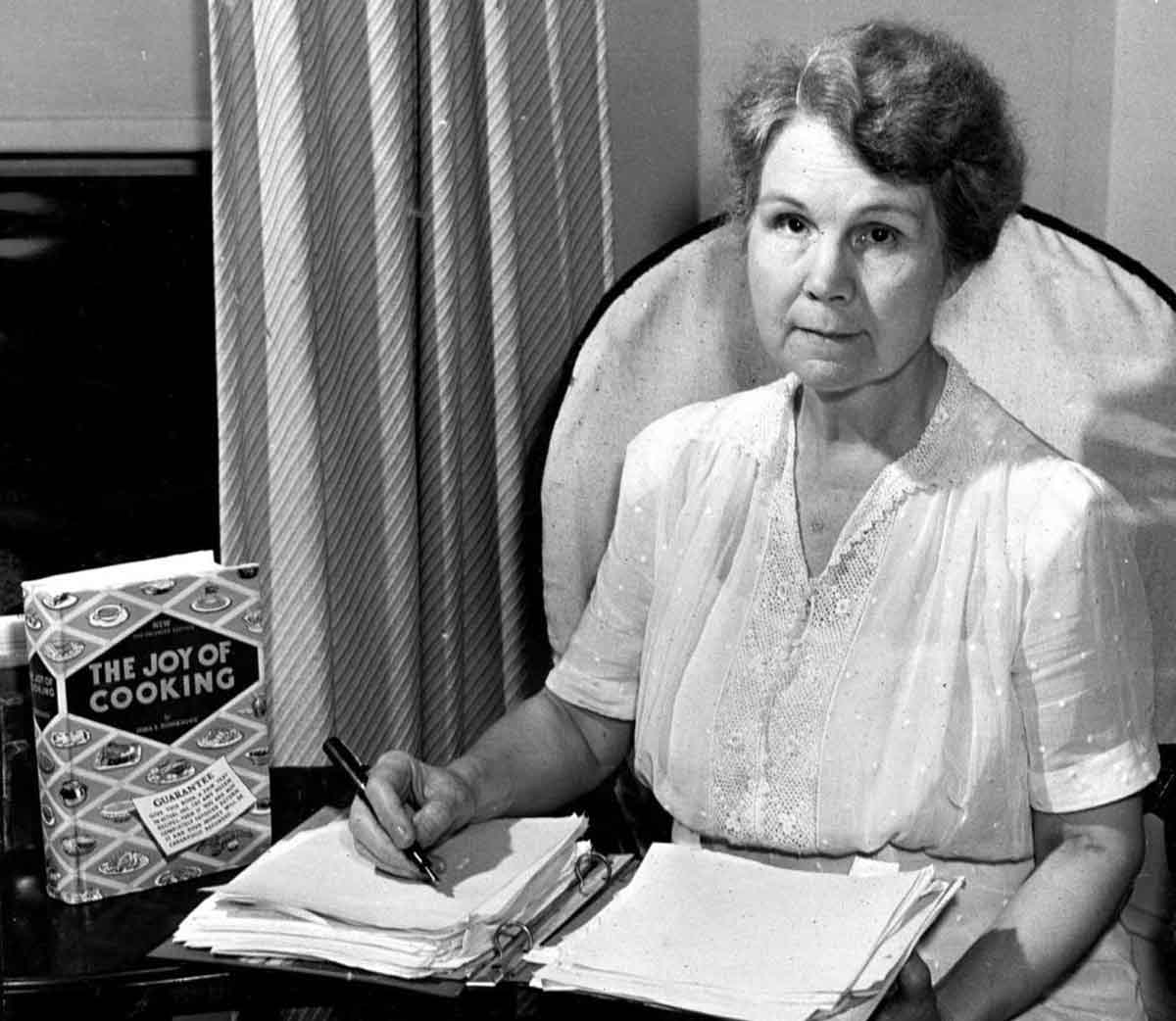
John: I think that really gets at the heart of the ethos that we brought to the book. It’s not just trying to continue the tradition, not just trying to improve upon this book, but also to try to speak to home cooks where they are and to try to anticipate their needs as much as possible.
David: Do both of you have backgrounds in food? Because suddenly taking on this tome and not having any sort of background in cooking could be awfully difficult.
Renee: If not daunting.
John: It was both. Luckily Megan had some professional experience, I guess. Worked in a bakery.
Megan: Yes. I worked in a bakery. I had worked on a goat dairy for a few years. Some interesting experience with food, but I had also only graduated in, let’s see, I graduated from college in 2010.
John: Time flies.
Megan: I met John in 2010, right before I graduated, and then that same year we went on to start working for his family’s business. The amount of experience I had had was pretty limited. So in a lot of ways, my entire career as an adult has been working on this cookbook.
David: Interesting.
A long haul for this revision
Renee: How long did this revision take you?
John: Yeah, we started working for the family and started working on the book in 2010. We basically started by apprenticing with Ethan and what that really entailed was just testing all the recipes from the 2006 edition. That’s how we started.
John: Then we also helped build an app for iOS out of the 2006 edition. After all of that, we finally decided that we had not only some insights into how the book was put together and a lot of insights into what recipes really worked and which ones needed to be tweaked, but also just had kind of a better idea of how to proceed with the next edition.
John: From there, we built an outline that took a long time, but we ended up signing a contract with the publisher, I think it was five years ago.
Megan: Yeah. I think it was five years ago, but kind of to echo what John said, I don’t think we would have been able to do this revision if we hadn’t had the previous five years of experience just testing recipes. We also did these recipe genealogies where we would cook the recipe, make our notes, and then try to figure out where it had been added in the book. Which edition it came from originally and whether it appeared in every edition since then or if it skipped over one or two, how it had changed along the way.
Megan: That really gave us this in depth, look at the history of when things had been added. It kind of also gave us a familiarity with the different voices of the different authors. It got to where we could tell, “Oh, this is an Irma recipe, for sure. This is a Marion recipe.” That was very instructive.
John: Or a ’97.
Megan: Or a ’97 recipe.
Renee: We’ll get to that in a second. It’s almost as if the book needs a Cliff Notes to go with it. With all these annotations.
Megan: Yeah. That would be a cool thing to do for the 100th anniversary.
David: That would be a great idea.
Megan: Yeah.
David: Yeah. Are there any recipes that have made it from Irma’s all the way down to this one?
John: I want to say that there are around 100 recipes that have remained and a lot of them have not really been altered all that much. Although obviously some of them have been tweaked and updated over the years, but yeah. During the process of these genealogies, it was pretty surprising how many we were able to trace back to either the 1931 edition or the 1936.
David: All the way to the 1931? That was a small, not a small edition, but that was all printed. She had it printed herself.
Megan: That’s right.
John: Yeah. Relatively speaking pretty small.
Megan: Yeah.
Testing thousands of recipes
David: Yeah. I mean and it was way ahead of her time too basically doing self-publishing. I’m curious though, both of you guys are so thin. Did you guys test all these recipes? If you did, how did you remain thin?
Megan: We did test them. Yes, we tested a bunch of recipes. How many recipes do we test in the first five years?
John: By the time we actually signed a contract, I think we had tested over 1500 recipes.
Renee: Oh dear God.
David: Wow.
John: Yeah.
Megan: Then all the new recipes in the latest edition. So there’s about 600 of those that we did all of those ourselves. We did have three recipe testers that worked with us part-time to help test some of the ones that were already existing from previous additions. We also had the benefit of, so, in 2006, every recipe in the book was tested by a professional test kitchen in New York. They had physical copies of all the tests notes that they sent us several years ago in these huge boxes.
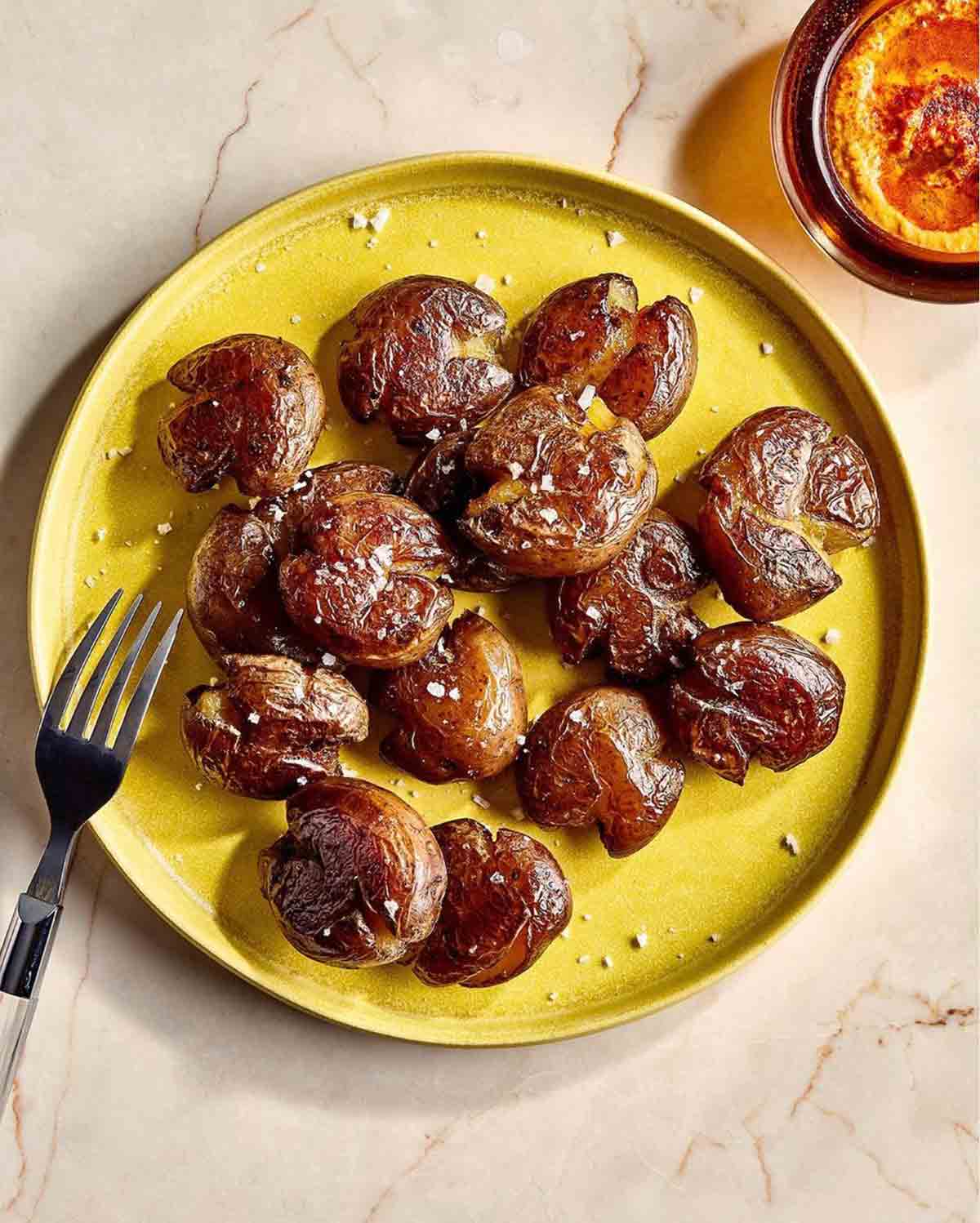
Renee: A semi-load full.
John: They were cleaning out their trove at Iron Mountain and so they were like, “Do you want these tests notes?” It was like, “Oh yeah, sure.”
David: Why not?
Renee: Did you actually comb through all those boxes of notes? Is that how you decided what recipes to keep, what to change, and what to add?
John: It was definitely like there was an archiving project as well as all of this recipe testing. Yeah, we organized all of those tests notes so that we could functionally get to them when we needed them. We certainly, if we were having trouble with the recipe, we would go back first and consult the notes for sure.
Megan: It did inform, not necessarily recipes that we wanted to get rid of or keep, but if we found a test note and there was an issue with the recipe, we made sure that that issue was resolved. If it wasn’t, which did happen in some cases, we went back and retested it to make sure that there wasn’t a problem.
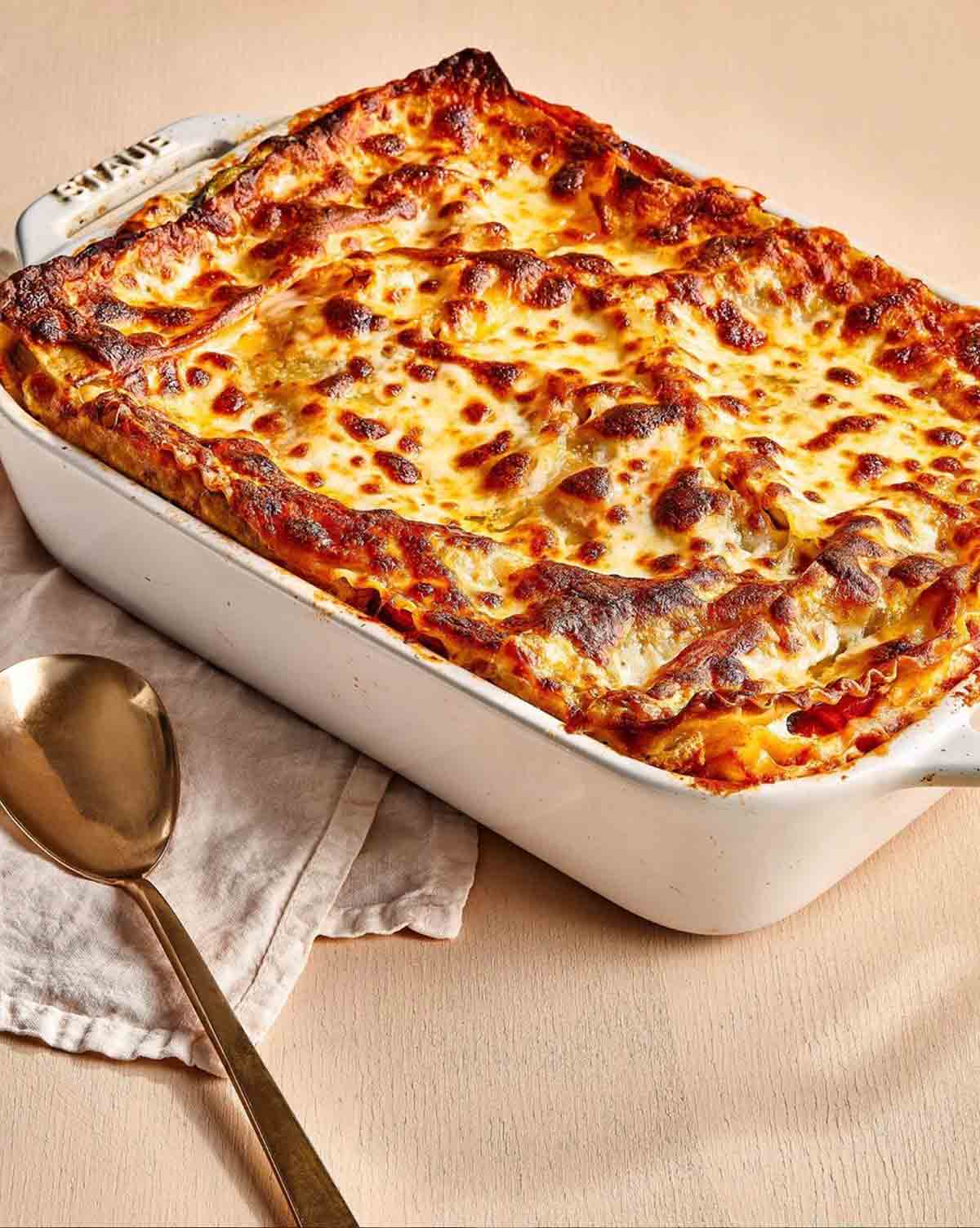
Choosing what recipes went into the new version
David: How did you decide what new recipes to add from the last edition? What informed you?
John: It was really tough. I mean, I feel like we first of all, we tried to identify classic American recipes or maybe even regional specialties that we hadn’t had. We were like, oh my God, why don’t we have a Chicago deep dish? My father grew up in Ohio and yet we didn’t have a recipe for buckeyes, which are like some of the simplest candies you can possibly make.
John: Then that was another thing it’s like, okay, we should have super duper simple recipes for people to make in some of these more challenging chapters, like the candy chapter.
Megan: Then there were other sections of the book that just felt like they needed a bit of a refresh because we cook things differently now. One good example is the vegetables chapter. That chapter had not really been extensively revised since probably the 70s. Well, I mean, ’97 being the exception to everything about this book. But in that chapter, you would have all these basic recipes for cooking vegetables. Then they would be served with white sauce on top. It’s like, okay. I mean, that’s fine, but we need to update this chapter.
Megan: Just doing more interesting things with vegetables. We did add some more vegetarian and vegan recipes, like more main course or heartier recipes because we know more people are interested in cooking that way, even if they’re not vegan or vegetarian. Lots of little changes.
Megan: Really, we took notes over the entire period that we were testing recipes, thinking, okay, we don’t have a recipe for shakshuka that seems like something people are wanting to cook now. It seems pretty elemental almost now.
John: And that kind of brings up the other kind of thing that kind of drove our decisions about what to add. That is, the 1997 edition was actually the one I took to school. When I moved out of the house and had to start fending for myself, that was the one I took.
John: One of the things I loved about it was all of the new international recipes that were in that edition. I think we both realized that it was time to kind of not only improve the ones that we inherited so to speak from previous additions, but also to kind of expand our repertoire of international recipes. To things that maybe aren’t just to keep people’s interest up as far as exploring other cuisines or cuisines that are new to them.
Megan: So moving beyond just having a recipe for pad Thai and adding things like Hosogai. Just digging a little deeper and there were just thousands of these little decisions to make as we were revising.
Renee: Sure, one at a time.
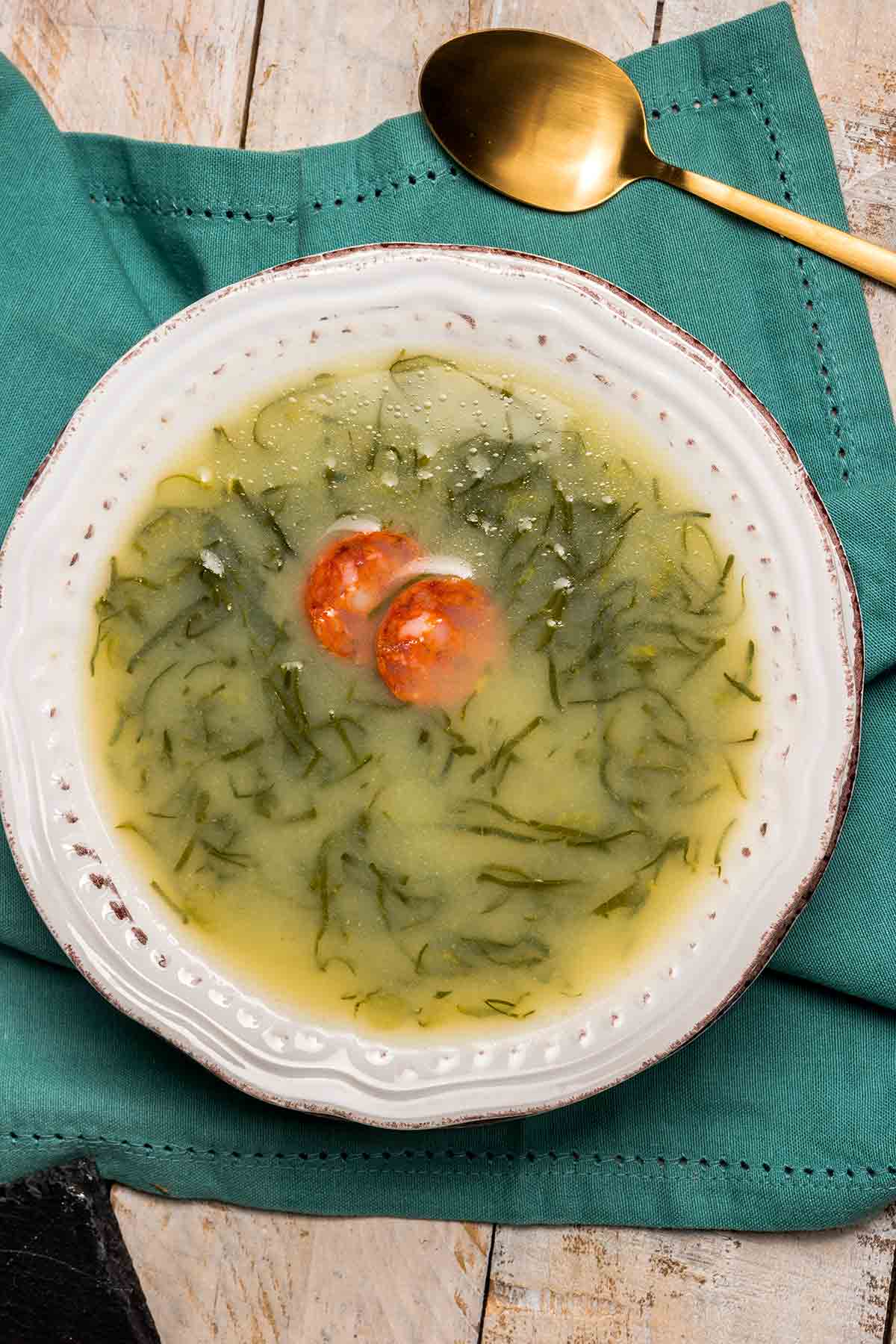
David: Well, I was very happy to find out that there is a Portuguese recipe in there for caldo verde. I don’t know which edition this came in, but I’m grateful, being Portuguese. I’m grateful that our quote unquote, our national dish people consider to be a national dish is actually included in The Joy of Cooking. I do appreciate that.
John: It’s definitely one of our favorites.
Megan: Yeah. That’s a fantastic recipe.
David: Yeah, it is.
The problematic 1997 edition
Renee: The 1997 edition, we alluded to that earlier, it varied pretty dramatically in style from what went before. Intentionally so. There were some star chefs and food writers who overhauled some recipes, created new recipes. There were some recipes that were dropped.
Renee: A lot of people say the Rombauer heritage was lost. If you could just talk to us a little bit about how that affected the family and how that compelled you to kind of take a different perspective to the following edition?
John: Man, yeah. It’s a long story. I guess you could call it a painful saga, but…
Renee: There’s always a lot more behind the scenes than what anyone ever realizes, right?
John: Yeah. I mean, I graduated high school in 1997 so I wasn’t there for the play by play, but in addition to all of those tests notes that we inherited from the publisher, we also got just as many boxes of the paper trail from the 1997 edition. It is truly amazing just the history of that. I mean, I think a lot of the food writers that were involved with it probably have a bad taste in their mouth from their experience with that project.
John: I don’t blame them based on what I’ve seen. But I guess the context for the 1997 edition is that my father, at that point, he had been basically dealing with an adversarial publisher for, well, basically since the early 80s is when he tried to start putting together the next edition of Joy. Marion, his mother, had published her last edition in 1975 and passed away a few years later.
John: Bobs-Merrill, the publisher that they were with that went out of business, there was a brief period of time when Joy was underneath the ITT umbrella and apparently that was a nightmare. Then finally MacMillan, that’s where we ended up at, they really wanted to wrestle editorial control away from the family. It was pretty much the condition that they had for a releasing another edition.
John: They tried to various ways of pressuring my father to try to relent and give them editorial control. They could just basically turn The Joy of Cooking into a brand rather than continue the legacy that Irma started. That’s kind of the backdrop and finally, after lots of maneuvering, we were able to ink a deal with Simon and Schuster.
John: My father’s counsel at the time, his agents, really thought that a really high-powered editor would be the thing to kind of rekindle the spark after 20 years of there being no Joy of Cooking.
Renee: Understandably.
John: Yeah.
David: That makes sense, yeah.
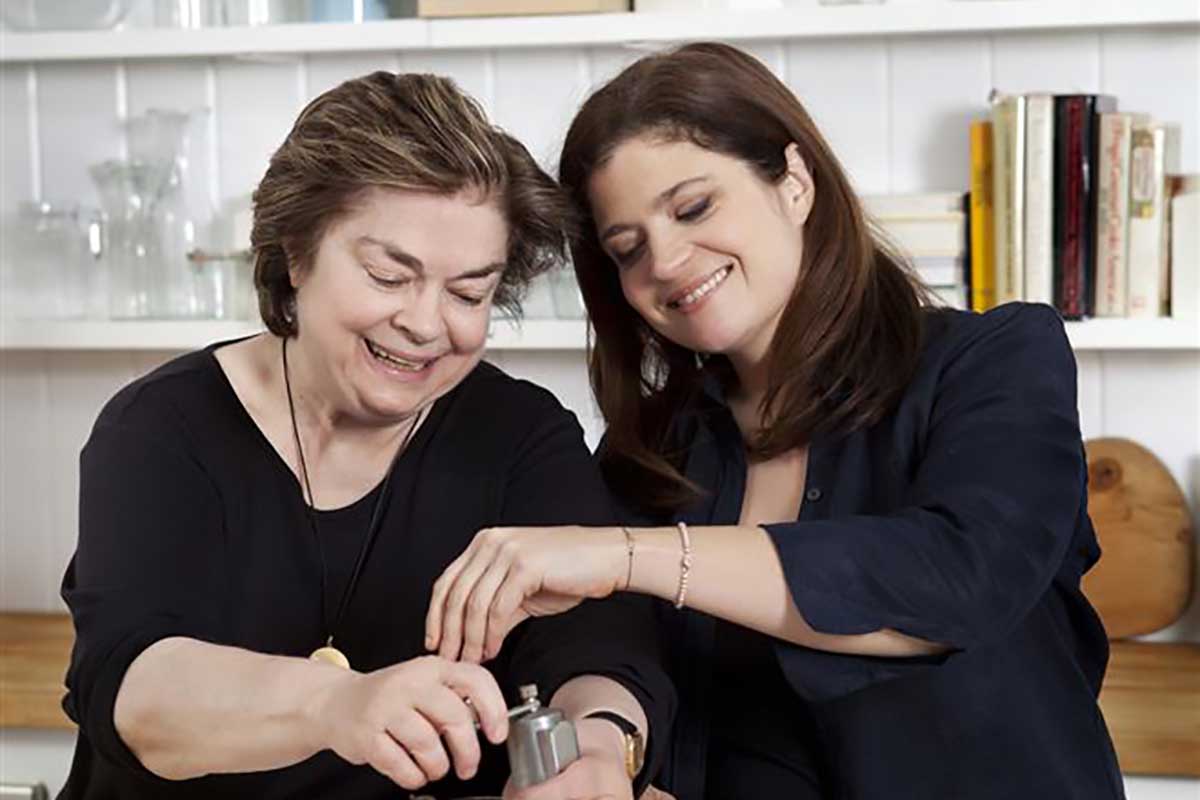
John: And so they enlisted a famous editor, Maria Guarnaschelli (above, with her daughter chef Alex Guarnaschelli–ed.), and she really approached it and I think what I would consider to be like the works approach. It’s a huge project. The book hasn’t been updated in 20 years. So what do you do? You find people to really work in their area of expertise. You divide up the labor so that it’s not an onerous task, all of that stuff.
John: There ended up being like, I think it was 120 contributors altogether. Yeah. She enlisted lots of very, people I respect and rightfully so. Rick Bayless.
Megan: Alice Medrich. Rose Berenbaum.
John: Molly Stevens.
Renee: That was at the time when food writing just seemed to be burgeoning. I mean, it was becoming this thing where in the past it hadn’t. You had all these names and personalities.
David: And voices.
Renee: And voices. Different voices.
John: Absolutely. I really think that there was some management issues. I think there were like a lot of personality conflicts, especially with Maria. I mean, being really young, I had some good interactions with her, but apparently I was an anomaly.
Megan: In the minority.
John: Yeah. By the time that Ethan and Maria were out there promoting the book, they really weren’t speaking terms anymore because it was just such a fraught process, but Maria is a talented editor, was a talented editor.
John: The reason why Joy works is because, why it has worked for so long, is because we try to approach it incrementally. You don’t necessarily want to start over from scratch. You’re not creating like this gigantic end-all, be-all reference book from scratch. By starting over like that and trying to work within the typical timeframe that book publishing, kind of how the business works, it created a situation where it was basically, regardless of her skills as an editor, an impossible task.
John: The manuscript just ballooned out of control and as a result, a whole bunch of cuts had to be made at the end. Yeah, so all of the preserving chapters had to be cut, cocktails had to be cut, frozen desserts…
Megan: Most of the Know Your Ingredients chapter was cut. Most of candies. A lot of the chapters that have a lot of character and people expect from The Joy of Cooking were gone.
Renee: The history.
Megan: Like John said earlier, there’s a lot of things that are good about the ’97 edition, but I think if you look at it holistically, it did lose the voice and that familiar feeling of Joy of Cooking that it’s had since 1931 and people could tell.
Megan: When we compare that edition to the others, it does feel like an anomaly in spite of all the good things it has. I mean, there are complex feelings about it and for a lot of people, that was their first edition of Joy. So that’s their favorite one and that’s totally great. We’re happy that they found it and we love that they love it, but yeah, we have complicated feelings about it.
Renee: Of course.
David: John, your dad pulled it back with the edition after that, the one before this, correct?
Later editions
John: That’s correct, yeah. The 2006 edition, it was published on the 75th anniversary of the first edition and as such, it was kind of conceived of as a taking the best of the 1975 edition, the one that Marion published and the best of the 1997 edition.

John: Yeah, I feel like that kind of got us back to a good point at which to move forward, but I think that at the time the family was kind of going for a retro feel. So there were some recipes that were brought back that I don’t think either one of us would have done. Like shrimp wiggle was one of the ones…
David: Shrimp wiggle.
John: Yeah.
David: Oh, for our listeners, oh, John, please tell us what shrimp wiggle is.
John: It’s a béchamel with shrimp and…
Megan: Ketchup.
John: Ketchup.
Megan: Or chili sauce. Is it chili sauce or ketchup?
John: It might be chili sauce.
Megan: It’s one of those.
John: Yeah. Time flies, I can’t remember.
Megan: Green peas and then you serve it over toast. It’s basically shrimp in white sauce with ketchup and peas.
John: It’s like a seafood SOS.
Renee: I’m grateful that the book has you two back at the helm. Very grateful. Did you both consult with your dad, John, when you were doing your addition?
John: Absolutely. It was really hard to make some of the cuts that we had to make in order to make room for all of the stuff that we wanted to add. Sometimes I felt like we were treading on hallowed ground or that we might be. I definitely don’t want to trampoline over an heirloom family recipe. If I had a question about something or if I needed “permission” to go in a particular direction that I thought was a little like riskier than the alternative, then I would definitely be on the phone with him immediately.
John: I think that Ethan definitely was ready to kind of give us the latitude, the freedom that we needed to take the book where we needed to go with it because I think he understands that we probably had a better handle on what’s more relevant for today’s home cooks then that he does.
Renee: Sure, and I think it’s understandable that it would take you a little time to kind of feel your way through it. That’s most things in life. You have to start to experience it before you can get comfortable with it.
Megan: Yeah, definitely. I think for Ethan as well, he, as John mentioned earlier, he had such a struggle with the publisher for so many years that by the time we were ready to take over, he was sort of like, “Here. Take it. Please.”
How many recipes in all?
David: It’s all yours. You’ve given birth to this I-don’t-know-how-many-pound baby with how many recipes in the book, this latest edition?
Megan: 2,400 is our actual number. The publisher really likes to inflate the number based on if a recipe has optional ingredients that might be added, then they count that as a new recipe. So our number is 2,000.
David: 24. So you’ve taken 10 years to revise 2,400 full distinct recipes, you’ve gone through postpartum depression.
Megan: Yes.
David: What are you doing now? Are you looking forward to the next edition? Are you planning the 100th?
John: We started making notes on the next edition maybe a week after we turned into the manuscript.
David: Really?
Megan: Yeah.
John: Just things that we like, or oh no, we forgot this, or…
Renee: All those things that come to you after you hit send.
Megan: Or things that we thought of during the revision but that we ended up not having room for, or it didn’t work for one reason or another. Yeah, we already have a list going, but we haven’t really started in earnest.
David: Do you consider yourself better cooks now that you’ve gone through this whole process?
Megan: Yes.
John: It was definitely a learning experience. Yeah, for sure.
Megan: Well, because Joy is such a general cookbook, it has a little bit of everything. You definitely learn things as you have to go through different sections like smoking meat, or learning how to make different types of candies, or baking bread, and all this stuff.
Megan: Both of us have certain areas of cooking that we really love and are better at. I’m more of the baker. John is really good at like grilling and smoking and preserving projects like fermentation. We had our specialties, but then this really challenged us to get outside of that and reckon with some of the other things that we aren’t as familiar with.
David: I think what is so special, John—and I’m speaking to John because it’s his family—is that it started with Irma. Of course she did it because she needed the money. She needed to somehow create income for herself. It went down through this whole line of amateur cooks and it comes down to you. And you were not a professional chef. You’re not professionally trained. If you go through these recipes as an amateur cook and you make them work, that means, I think every other amateur cook who really is careful and thoughtful can make the recipes.
David: That’s what I think was somewhat missing in the 1997 edition a bit. Now it’s back in your hands. You guys are the stewards and moving forward, I’m sure you’re going to be adding a lot more and your kids will be coming into this and who knows where it’ll go, but I love the fact that the lineage is unbroken and it comes from the amateur cook experience.
John: No, that’s absolutely what we were trying to keep, to remain true to. This is written by and for home cooks.
Renee: Beautiful. And it shows. I don’t know if it’s so much “amateur cook” as “always learning cook.”
Megan: Yeah.
Renee: I think we all are.
Megan: Curious and always learning and willing to try new things.
The Brian Wansick Debacle
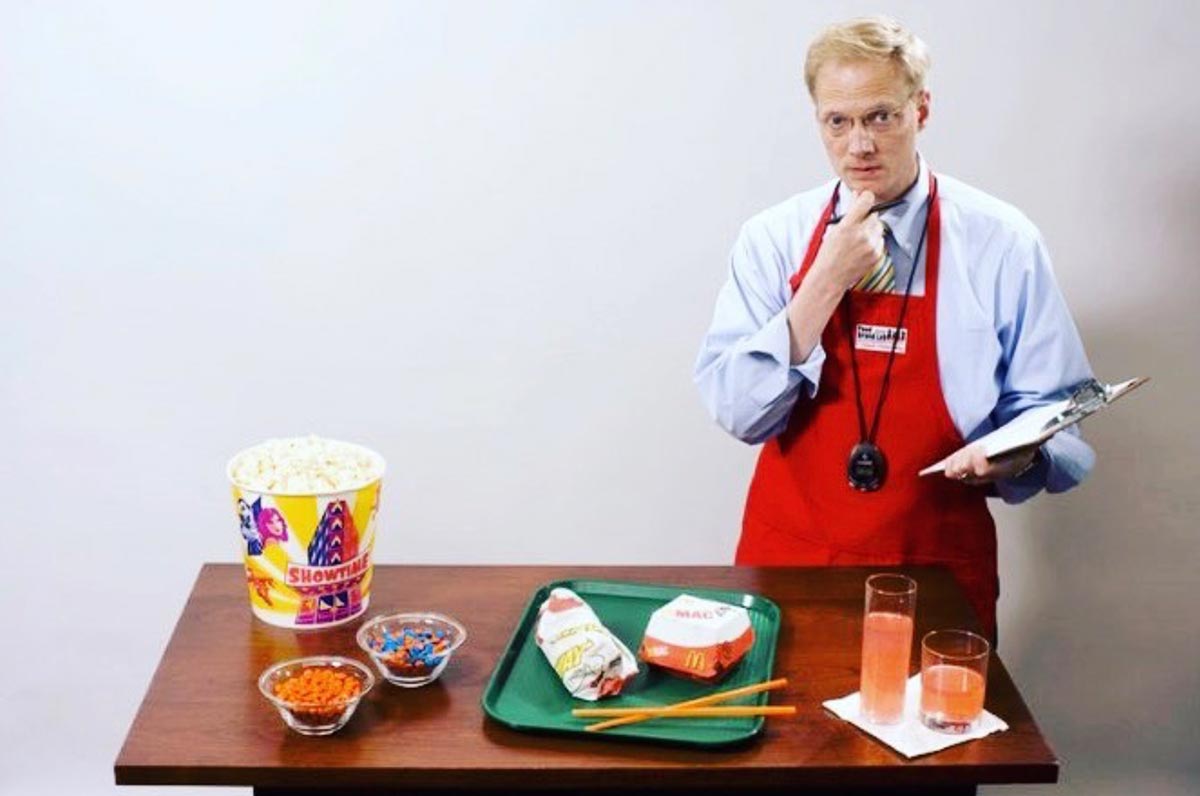
David: But just because you’re amateurs doesn’t mean that you can’t be kick ass! Because in 2009, you both were blindsided by a study by Brian Wansink (above) in the Annals of Internal Medicine that said, “Joy was in a sense complacent in the obesity epidemic because portion size of the newer additions were 44% bigger,” but you two body slammed that study. Can you talk a little bit about that of how you body-slammed this doctor?
John: Well, it took a while for us to kind of work up the gumption to do that, but so at the time when this was getting passed around, there are like lots of little kind of easily digested nutritional studies that he’s put out there over the years. I think this was actually one of the first ones he had done, but it had gotten a lot of publicity considering that it was a non-peer-reviewed letter. At the time, Anne Mendelson, I think wrote, she’s the biographer of Irma and Marion…
David: She wrote Stand Facing the Stove.
John: Right, right.
David: Yeah.
John: She came to our defense and wrote a little letter to the editor. I think the LA Times when they had published a report of this study. At the time we really tried to head it off, but we figured that it would just kind of take its course or just go through the news media ecosystem and then be left by the wayside and people would go on to another topic.
John: It turned out that not only had it been cited many, many times over the intervening years in academic works, but Brian Wansink was also trying to…when I noticed it again was when he had one of his graduate students draw a cartoon.
John: He was basically offering it to anyone who wanted to post it. You could use this for free. I don’t know, it just got me really angry. We had been doing all of these recipe genealogies so I really knew the study that he did, it tracked maybe 13 recipes, supposedly they were the only ones that were the same. That was his data set, which is incredibly small, considering that it’s a gigantic book. But I knew that I could do something with this considering all the research that we had done. We were kind of at a lull waiting for the publisher to get back to us on some contractual issues. I got some nutritional analysis software and just went at it and luckily…
Megan: How many recipes did you end up analyzing that way? Because you didn’t just take a few…
John: 300.
Megan: Yeah. You didn’t just take the ones that Wansink did you did all the ones that had been in the books since was it ’31 or ’36?
John: I think it was 1931, yeah.
Megan: Okay.
John: Yeah. Luckily I had no idea what to do with this stuff. I didn’t know if I should be trying to publish a piece in a journal or how to even go about that, but as luck would have it people were finding issues with this professor’s work already and-
Megan: Interestingly, I think a lot of folks have mistakenly referred to him as a scientist or as a doctor. He was actually a marketing professor at Cornell.
David: Interesting, yeah.
Megan: He’s not a nutritionist. That’s kind of a side note.
John: There are lots of side notes with this.
Renee: But a very important note.
Megan: Yes.
Renee: Most people don’t question that. They see something published and they just go along with the grand thinking.
John: Especially in this era of amateur epidemiology. Definitely strikes a cord that way.
Inspired by @stpehaniemlee ’s new piece, we have decided to share this. We have the dubious honor of being a victim of @BrianWansink and Collin R. Payne’s early work. pic.twitter.com/s4NUd1YpqC
— Joy of Cooking (@TheJoyofCooking) February 27, 2018
Megan: I saw something on Twitter one day about someone else had taken issue with another one of his studies. I texted John immediately because I was at my other job so I couldn’t do anything about it, but I texted John and I was like, “This is the time to get your findings out there and to put it on Twitter.” John did a Twitter thread and got the attention of someone from Buzzfeed who had been reporting on his other studies and retractions.
Megan: Then Helen Rosner at The New Yorker was interested. So she wrote a piece about it. It got a lot of attention and it was kind of terrifying at the time because we were having our data set analyzed by actual statisticians. People were asking us for our data and we’re like, “Okay, here it is, please be kind.” But what John found was that our results from all that nutrition analysis was that there wasn’t a statistically significant difference in the caloric density of recipes from 1931 to 2006. It was really an interesting project for us.
John: We did not supersize anything.
Renee: The truth prevails.
John: Exactly. I mean, I really do appreciate that critique of restaurant portions in packaged foods, but you cannot treat recipes and especially yield lines like they are just like I guess, a trustworthy metric of what people are actually feeding themselves and their loved ones. I mean, the whole concept of leftovers kind of negates that.
David: Yes exactly. That’s very true.
Renee: Excellent point.
David: Well, John and Megan, it was absolutely wonderful having you on the show. Thank you so much for picking up the mantle of this incredible family, really America’s family, and bringing it forward into the 21st century. We really appreciate it.
Megan: Well, thank you so much for having us. It was great to talk to you.
John: It was a pleasure.
Renee: It’s such a pleasure. Thank you.
David: John Becker is the great grandson of Irma Rombauer, the original author of The Joy of Cooking. John is the fourth generation of his family to steward the iconic cookbook. Megan Scott is John’s wife. The two worked together for 10 years to coauthor the 2019 edition, which came out in November of last year. You can find this classic tome wherever books are sold. And look for John and Megan on Instagram at @thejoyofcooking.
The LC Specials Board
Hungry Customer: Those look good. I’ll have one. No make it two.
David: Renee, I know you put a lot of time and thought into what’s going to go up each week to tie in with our guests. Of course, we have The Joy of Cooking and I’m sure you have a panoply of old and new that work with The Joy of Cooking. Do tell us what’s on the menu this week?
Renee: Look at you busting out that the thesaurus. Yes, we do. We’ve got some new-fangled twists on some old-fashioned classics. Including grilled roasted chicken, which we have you first spatchcock or butterfly.
David: Oh great.
Renee: We break that down in detail, exactly how you need to do it. It’s so simple. It’s going to save you so much time and frustration at the grill because the chicken gets cooked evenly and quickly.
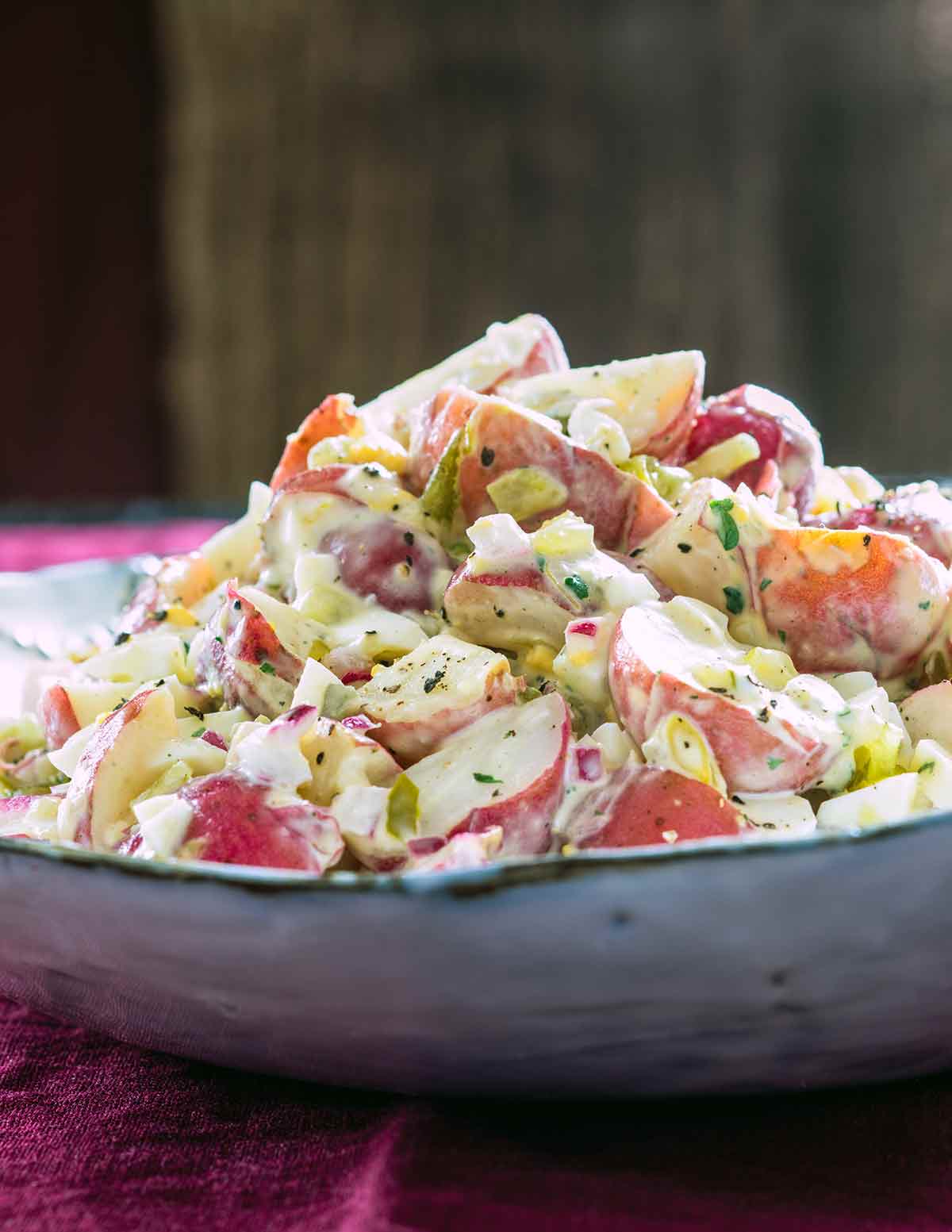
Photo: Beatriz da Costa
Renee: We also have a riff on southern potato salad. It uses sweet pickle relish, but I swear it’s different than anything your mom or grandma ever made. We take a whole beef tenderloin and we grill it.
David: Nice.
Renee: No-Churn Chocolate Oreo Ice Cream with Marshmallow. But vegan.
David: Oh, that’s interesting.

Renee: We’ve got baked macaroni and cheese for those of you who craved that yearround, but we tell you how to make it with cauliflower. Kids are actually clamoring for more, swear to God. Then we give you rhubarb pie, but with a little bit of a kind of brown butter twist on it.
David: What more could a man want?
Renee: Let’s not go there.
David: This podcast is produced by Overit Studios and our producer is the classic Adam Clairmont. You can reach Adam and Overit Studios at overitstudios.com. Remember to subscribe to Talking With My Mouth Full on your favorite platform and listen to us wherever you go. If you like what you hear and want to support us, leave a review and rating on iTunes. Chow!
Renee: Chow!
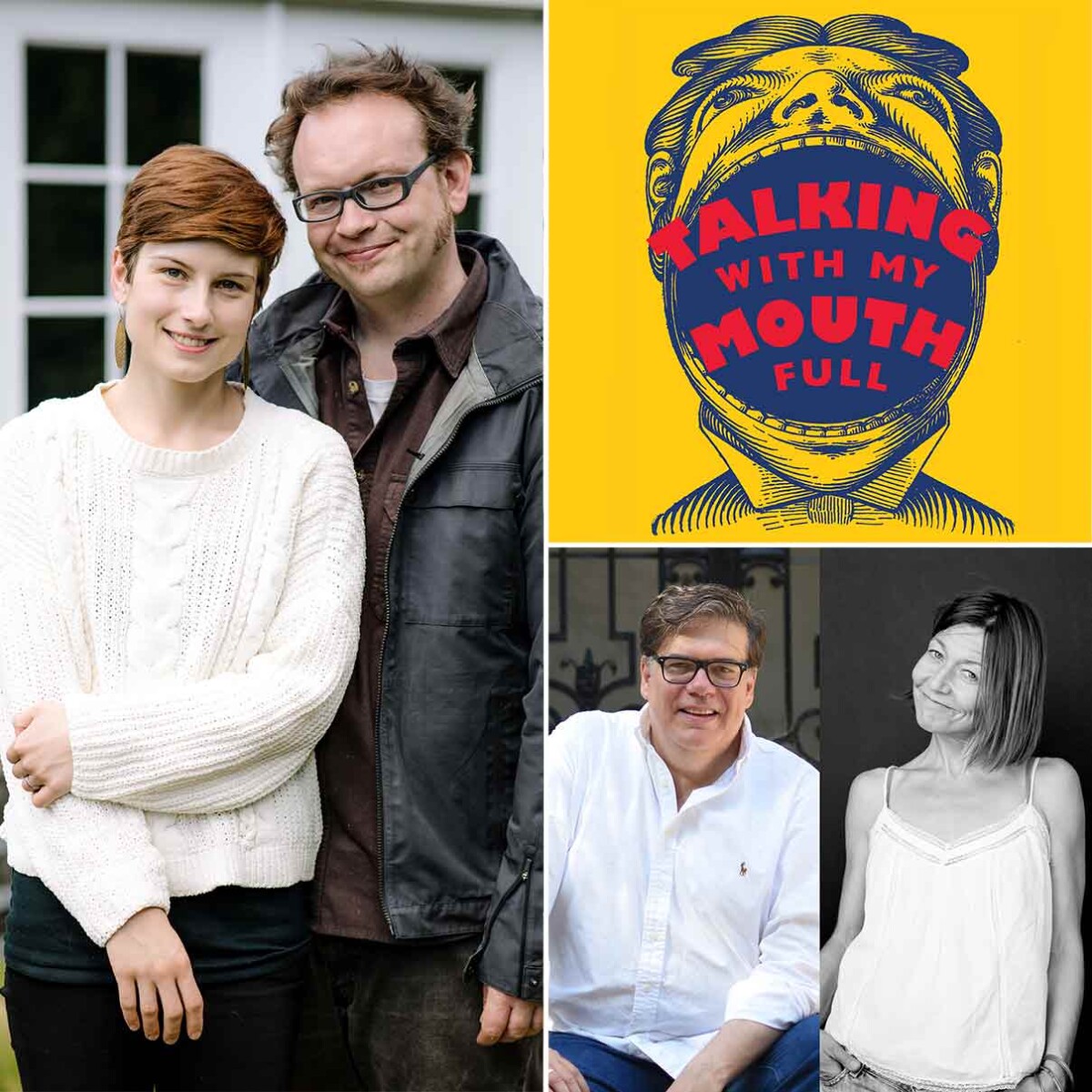


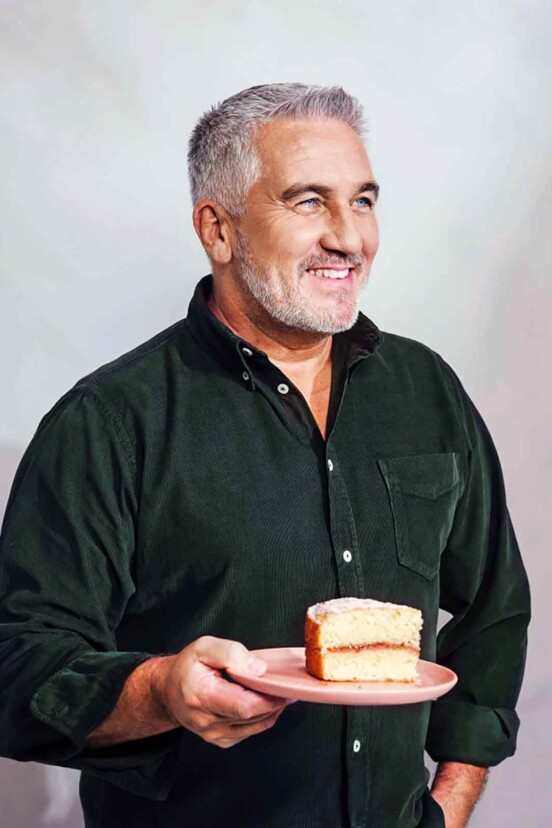










Susan, I love the stories that you shared, and the images they created. It’s remarkable what food does for us in terms of being inextricably intertwined with memories. And I also love that you still hold those memories dear and that you took it upon yourself to find a copy of that book as a way to bring them back to life. I so appreciate you taking the time to write what you did. Thank YOU for indulging us.
Reading the transcript of your discussion of Joy of Cooking was very timely for me. Last week, I ordered a copy of the 1953 edition, and it is slowly wending its way to my house. I was born in 1953, and this is the book that my parents basically cooked the crap out of. Eventually, the binding split, the book fell apart into three pieces, individual pages started flying off. It was stored in a plastic bag, but that didn’t hold up, and it finally just disappeared and was replaced by a newer edition. But that blue cover with the white diagonal lines was a ubiquitous image of my early childhood, and I decided I wanted my own copy. Both of my parents are gone now, but if I get curious about some old dish from the past,
I can be relatively certain that they used Joy of Cooking at minimum as a reference and reconstruct it from there. Also, there are old recipes in it that I want. My dad would periodically whip up old fashioned, candy-thermometer-cook-to-the-soft-boil-stage fudge from a recipe in that book, and I don’t believe that it has been included in the modern variations. But that fudge was the best chocolate candy I have ever eaten, and I will feel more secure owning the edition that includes the recipe. I seem to recall that the recipe recommended the use of Droste cocoa, and did we ever. My family had a real Droste cocoa fetish. Every single morning of her life, my mother prepared a cup of Drostes cocoa to go with her breakfast. For some inexplicable reason only my mother was allowed the cocoa, and she made it just so, exactly to her specifications. Not too sweet, not too strong, that cocoa really hit the sweet spot and I silently envied her for years, decades it seems. Now a marker of my adulthood is that I buy my Drostes cocoa in sets of 3 boxes.
My father was in counterintelligence during WWII, and he entered France on D-day and infiltrated into Paris, where he worked with the French underground. Since he was out of uniform and supposed to be a local, he found his own lodgings and ended up living with a French count. This man was very sophisticated and taught my father all about wine, fine food, and good French perfume.
After the war was over, and my father had married and settled down as a university professor, there were times when he felt called upon to demonstrate his superior knowledge of French cuisine while entertaining. I was very young when these dinners took place, and I don’t remember the entire menu, but I do remember the drama of Cherries Jubilee. I recently took a notion to recreate this dessert for my daughter, which is what led me to order the 1953 edition of Joy of Cooking, as I am quite certain that my parents referred to the cookbook as a point of reference. So when cherry season arrives, I will have my cookbook at hand, and be all prepared.
Reading your discussion with the current stewards of Joy of Cooking have brought back so many warm family memories. Thank you for indulging me.
Thank you so much for your comment, Susan! We never tire of hearing these stories, and it makes our work so much more rewarding to know how Joy has touched the lives of so many American home cooks in its 90 years.
Droste cocoa powder is truly excellent, and Irma seemed to have a fondness for it, as it is an ingredient she called for by name a few times (there have been very, very few brand names mentioned in Joy over the years). I can understand why your mother kept the cocoa powder to herself–it is quite expensive! We hope that when your new old Joy arrives it rekindles happy memories, and brings you many delicious meals.